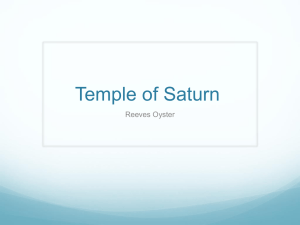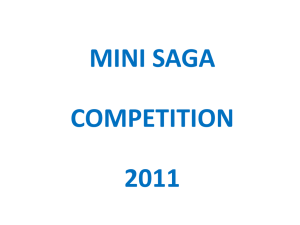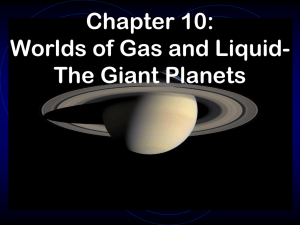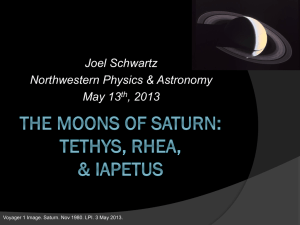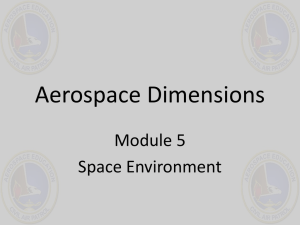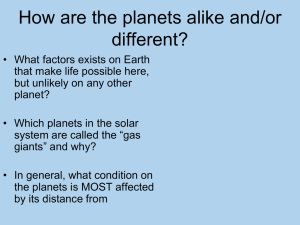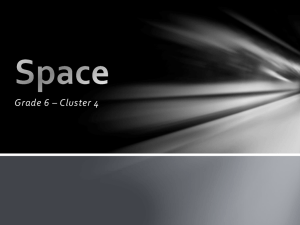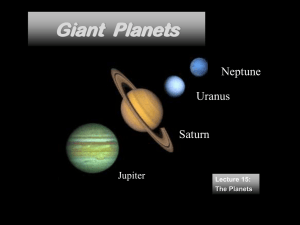Saturn-Science Project
advertisement
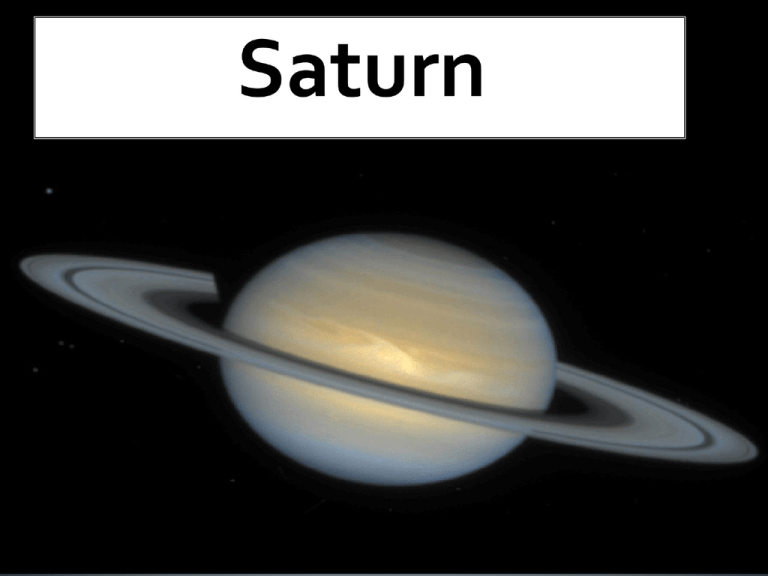
Saturn is the sixth planet in our solar system and is the second largest planet. Saturn is a gas giant along with three others in our solar system. Saturn orbits the sun at a speed of around 9.69km/s. Saturn finish's on revolution around the sun in around 29.5 Earth years. Saturn rotates at different speed depending on certain parts are above or under the equator. The parts below the equator rotate at a 10 hour and 39 minutes speed and above the equator rotate at a speed of 10 hours 14 minutes. Saturn’s distance from the sun is very far do to it is the sixth planet away from the sun. Saturn’s average distance from the sun is about 1.4 billion km away or 9 AU. Since our solar system is not a complete circle Saturn can be closer to the sun and farther away from the sun. Saturn’s gravity is less than Earth’s even though it is the second largest planet this is due to the gases on Saturn. Saturn’s gravity is 10.44 m/s2. Saturn’s atmosphere is made up of around 96% of hydrogen and around 3% of helium. The other 1% of Saturn’s atmosphere is made up of methane and ice water. Saturn’s temperature is very cool, Saturn’s average temperature is -178 degrees Celsius. Saturn can get much hotter as you make your way to Saturn’s core. Saturn has three layers of clouds which affects the temperature on Saturn. The first or upper layer of Saturn the average temperature is -113 C, the second or middle layers average temperature is -88 C, and lastly the bottom layers average temperature is 50 C. Weather on Saturn is very cooled it is very windy. Saturn’s winds can reach speeds up to 1,000 M/H. Saturn is a gas giant so it is composed with helium and hydrogen. Saturn’s composition as you see to the right shows the composition. The core of Saturn is rock and ice. Saturn is mainly composed of hydrogen and helium. Saturn’s surface area is 42.7 billion k.m². Saturn’s volume is 827,129,915,150,897 km3 Saturn’s mass is 568.3E24 kg Saturn’s density is 687.00 kg/m3 Saturn has many surrounding objects, some of them are 150 moons surrounding Saturn Including the rings they make up 90% of Saturn’s mass. This is a photo of Titan the largest moon of the planet Saturn. In 1973 a space probe called Pioneer II captured the first up close pictures of Saturn. There were two other voyages to Saturn and its largest moon Titan. The most resent mission to Saturn was in Saturn’s orbit in 2004. Cassini stayed in Saturn’s orbit to study new moons and even new rings. This is a photo of the mission badge for the mission to observe Saturn. Saturn is named after a Roman god Saturn’s biggest moon is named Titan The day Saturday was named after Saturn Saturn is least dense planet in our solar system Saturn is not the only planet with rings

